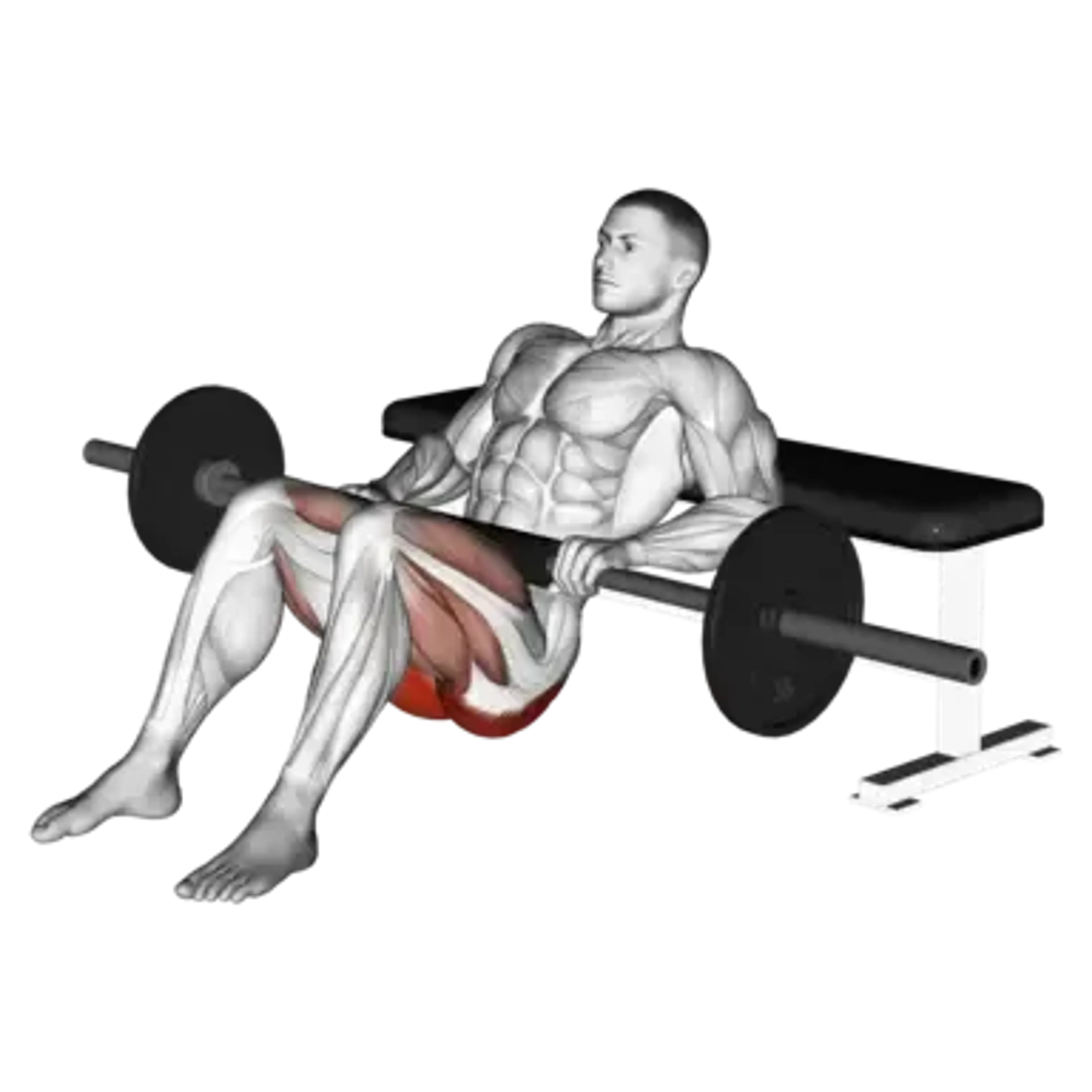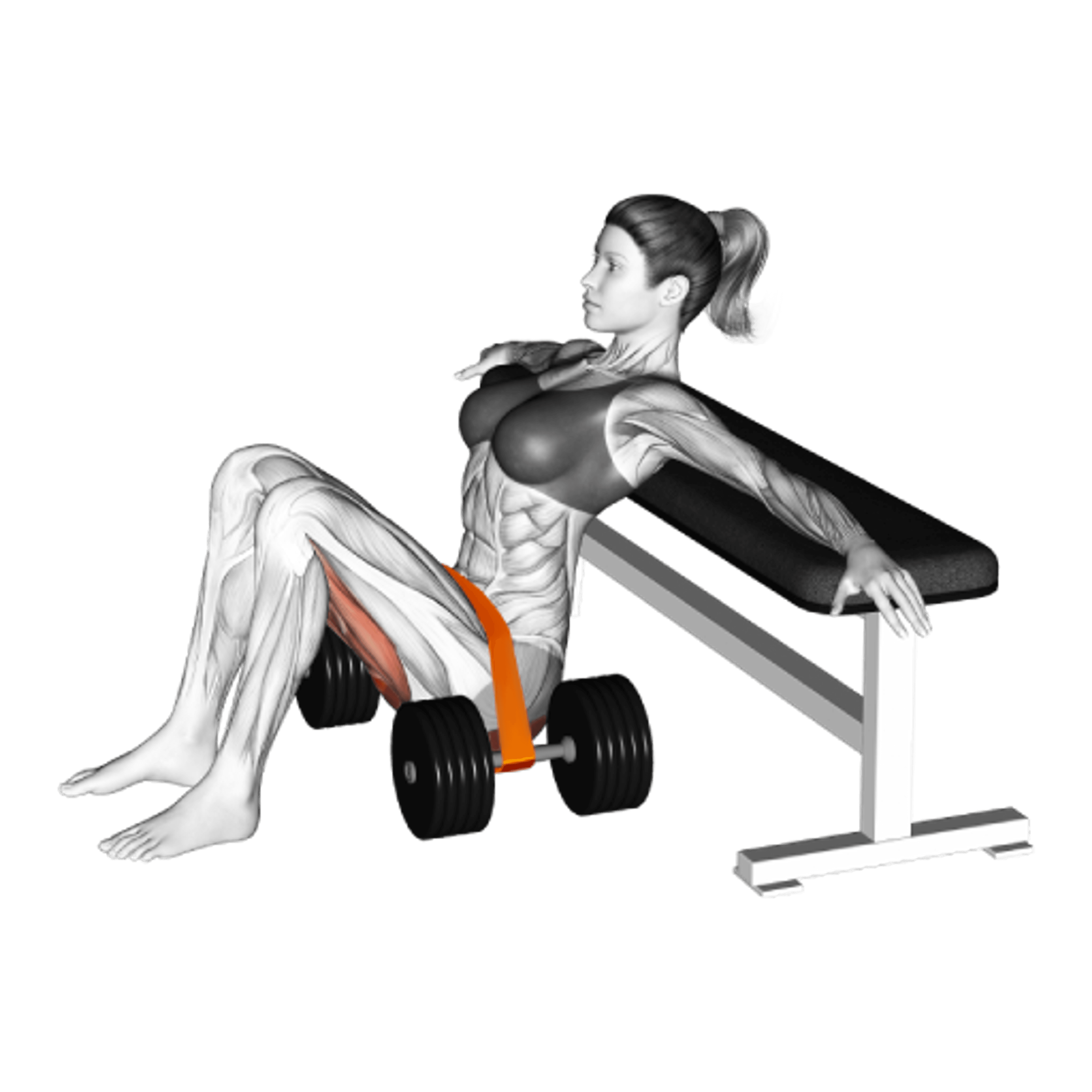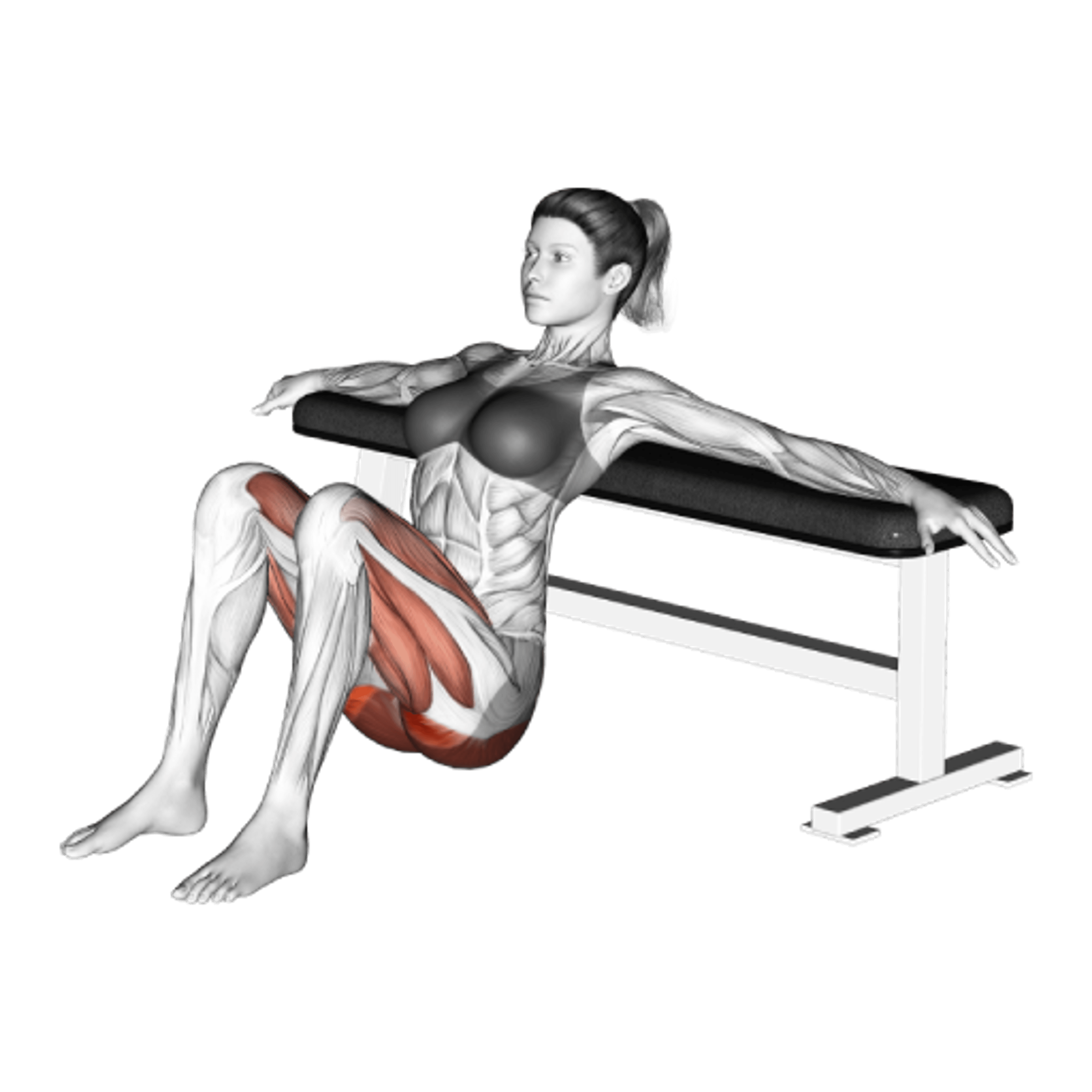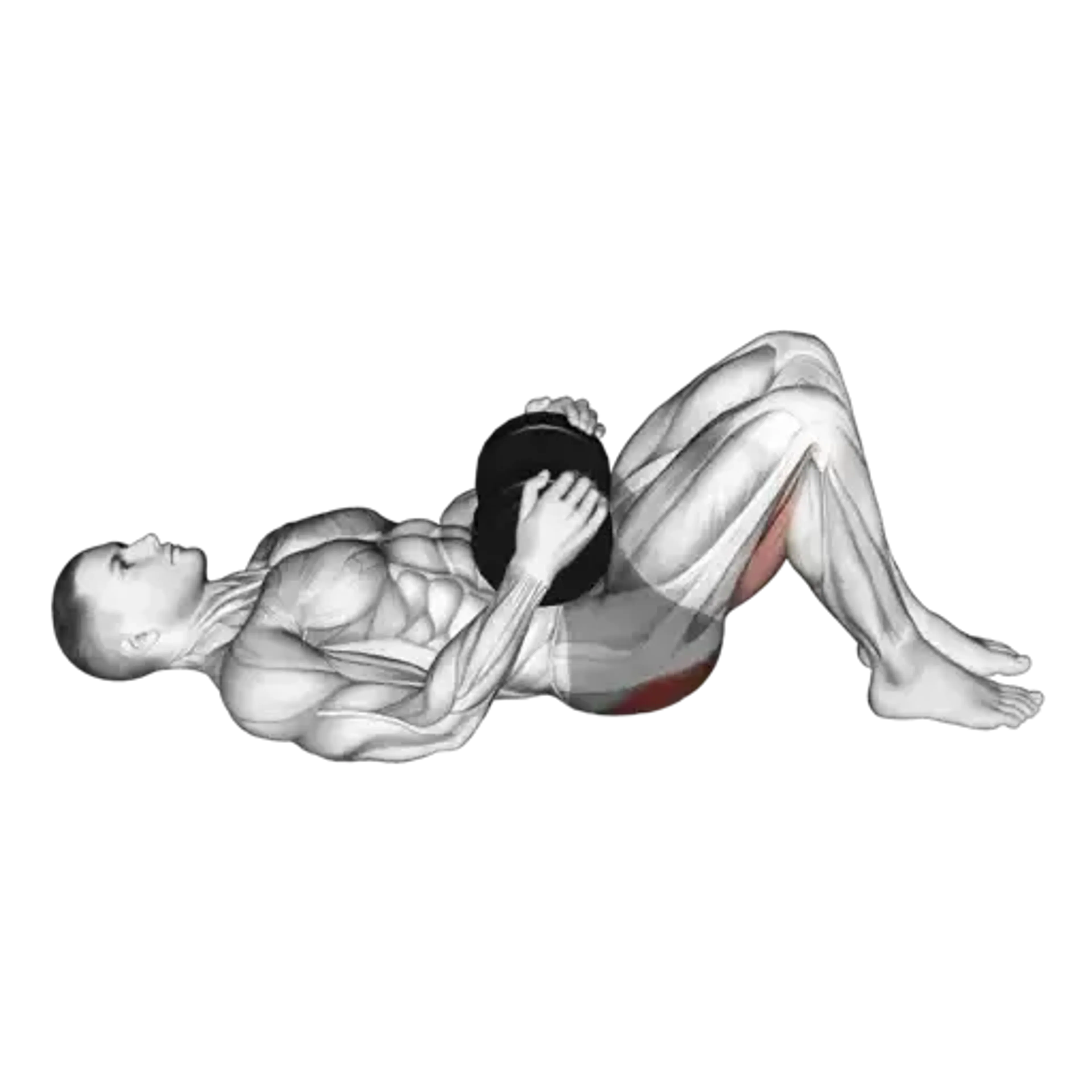Dumbbell Hip Thrust

Overview
- Primary Focus:
- Glutes.
- Equipment:
- Dumbbell and bench.
- Difficulty:
- Intermediate.
General Information
Dumbbell Hip Thrust is a compound exercise that primarily targets the glutes, while also engaging the hamstrings and quadriceps. It is an intermediate-level exercise designed to build lower body strength, enhance hip mobility, and improve overall athletic performance.
Unlike barbell hip thrusts, the dumbbell variation offers a more accessible and convenient way to strengthen the glutes without requiring extensive equipment. It is particularly useful for those training at home or beginners who want to build foundational strength before progressing to heavier weights.
This exercise is widely used for improving posterior chain strength, which is essential for sports performance, injury prevention, and functional movement patterns like running, jumping, and squatting.
Muscles Worked
- Gluteus Maximus
- Primary
- Gluteus Medius
- High
- Biceps Femoris
- Medium
- Semitendinosus
- Medium
- Adductor Magnus
- Low
Instructions
- Sit on the floor with your upper back resting against a bench and your feet planted hip-width apart.
- Place a dumbbell across your hips, holding it securely with both hands.
- Engage your core and drive through your heels to lift your hips towards the ceiling.
- Squeeze your glutes at the top and ensure your body forms a straight line from shoulders to knees.
- Slowly lower your hips back down without completely resting on the floor.
- Repeat for the desired number of repetitions.
Common Mistakes
Injuries
Dumbbell Hip Thrust is a low to medium risk exercise, but improper form can lead to discomfort or injury.
- Lower Back Strain – Failing to engage the core properly or arching the lower back excessively can cause strain. Keep the movement controlled and maintain a neutral spine.
- Knee Discomfort – Incorrect foot placement or excessive knee movement can lead to knee pain. Ensure your shins are vertical at the top of the movement to reduce stress.
- Hip Discomfort – Placing the dumbbell directly on the bone can cause bruising or discomfort. Use a pad or towel to reduce pressure.
To prevent injuries, focus on controlled movements, maintain proper posture, and avoid overloading the weight.
Alternative Exercises
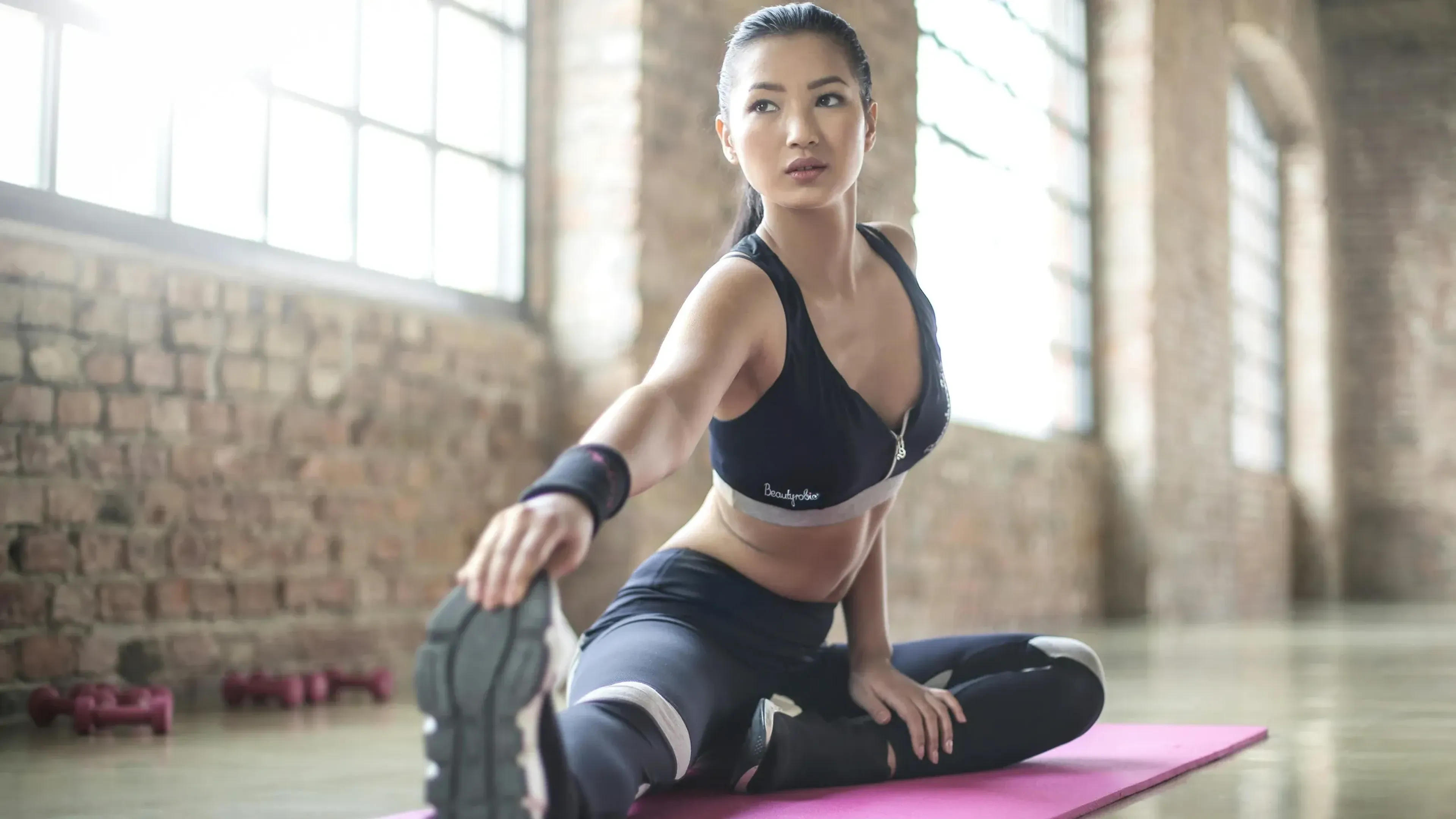
Frequently Asked Questions
- Q: Can I do Dumbbell Hip Thrusts without a bench?
Yes, but using a bench allows for a greater range of motion and better glute activation.
- Q: How heavy should the dumbbell be?
Start with a moderate weight that allows proper form and gradually increase as you gain strength.
- Q: Are Dumbbell Hip Thrusts better than Squats for glute growth?
They target the glutes more directly, but squats engage more muscles overall. Both exercises complement each other.
Overview
- Primary Focus:
- Glutes.
- Equipment:
- Dumbbell and bench.
- Difficulty:
- Intermediate.
